Come and experience our culture and explore Country. Our website helps us to connect up and share our stories! Jingi Walla !
Click on and watch our short digital Welcome to Country video.
To find out more about Welcome to Country click here
Click on and watch our short digital Welcome to Country video.
To find out more about Welcome to Country click here
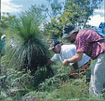 The following Learning Materials for Place of Plenty are available for download. Click Learn More below to find out more about this program.
The following Learning Materials for Place of Plenty are available for download. Click Learn More below to find out more about this program.
No materials are online presently. In the next phase of developing this website we will upload and create links to resource materials related to this program such as:
If you have any enquiries about this program please liaise with us through Contact Us > General Enquiry in the Menu.
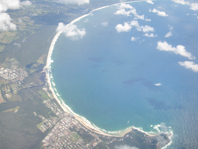 The place we call Cavanbah, now known as Byron Bay and surrounding district are located in the Northern Rivers region, the northeast corner of New South Wales, Australia. It’s about 750 kms (480 miles) north of Sydney and 165 kms (103 miles) south of Brisbane. Walgun headland, known as Cape Byron, is the easternmost point of mainland Australia. Cavenbah has always been an important meeting place for the Arakwal, neighbouring clans and people of the Bundjalung nation. Arakwal Country extends from Seven Mile Beach, south of Broken Head, to the Brunswick River up north, out to the escarpment west of Byron Bay, and east out into the Tasman Sea.
The place we call Cavanbah, now known as Byron Bay and surrounding district are located in the Northern Rivers region, the northeast corner of New South Wales, Australia. It’s about 750 kms (480 miles) north of Sydney and 165 kms (103 miles) south of Brisbane. Walgun headland, known as Cape Byron, is the easternmost point of mainland Australia. Cavenbah has always been an important meeting place for the Arakwal, neighbouring clans and people of the Bundjalung nation. Arakwal Country extends from Seven Mile Beach, south of Broken Head, to the Brunswick River up north, out to the escarpment west of Byron Bay, and east out into the Tasman Sea.
Click Here to see a dynamic map which shows you where we are. Move your cursor from the centre of the map to the left or right to see our location – in the state of New South Wales, in Australia, and the Asia Pacific region.
 Cavanbah and its hinterland are part of an erosion caldera of an ancient volcano which erupted 23 million years ago. Mt Wollumbin, the volcanic plug of this caldera and a sacred place to many Aboriginal tribes of our region, can be seen from many points in Cavanbah (Byron Bay) and on Walgun (Cape Byron, pictured here to the right). The hills and valleys of volcanic soils and their creeks come down to wetlands and estuaries lying behind long sweeping beaches, protected bays and coves with their rocky shores, and dunal systems covered in flowering heathlands and forests. These are home to many species of animal, birds, fish, amphibians and reptiles.
Cavanbah and its hinterland are part of an erosion caldera of an ancient volcano which erupted 23 million years ago. Mt Wollumbin, the volcanic plug of this caldera and a sacred place to many Aboriginal tribes of our region, can be seen from many points in Cavanbah (Byron Bay) and on Walgun (Cape Byron, pictured here to the right). The hills and valleys of volcanic soils and their creeks come down to wetlands and estuaries lying behind long sweeping beaches, protected bays and coves with their rocky shores, and dunal systems covered in flowering heathlands and forests. These are home to many species of animal, birds, fish, amphibians and reptiles.
These include shellfish, many fish species, sharks, dolphins, whales, turtles and dugong; eagles, pelicans, seabirds and waders, pigeons, parrots, honeyeaters and many other colourful birds; wallaby, echidna, possum, native rodents, flying fox and other small mammals; snakes, goanna, lizards, frogs and more! They are all special to us and part of our stories and connection to this wonderful Country.
 Cavanbah has a sub-tropical climate with hot wet summers, and cool generally dry winters with clear skies and maximum daily temperatures around 20C. This climate is beneficial for all year round outdoor living. High annual rainfall regularly feeds local waterways and productive volcanic and alluvial soils. Combined with rich food sources linked to the coastal forests, estuaries and wetlands our people were able to live here permanently for thousands of years, and support visitors when they came as well to Cavanbah (meeting place). The same applies today with relaxed outdoor living and tourism attracting people to live and holiday here from all over the world.
Cavanbah has a sub-tropical climate with hot wet summers, and cool generally dry winters with clear skies and maximum daily temperatures around 20C. This climate is beneficial for all year round outdoor living. High annual rainfall regularly feeds local waterways and productive volcanic and alluvial soils. Combined with rich food sources linked to the coastal forests, estuaries and wetlands our people were able to live here permanently for thousands of years, and support visitors when they came as well to Cavanbah (meeting place). The same applies today with relaxed outdoor living and tourism attracting people to live and holiday here from all over the world.
“Please look after our country when you come here, this is a very sacred special place. Lets work together to keep our country clean and healthy. Yoway!” Sean Kay, Arakwal family member.
We are strongly connected to our Country and it to us. The Dreaming made the land and gave us the land. Song-lines and stories identify and link places and events in the Dreaming, helping us to understand their interconnected value and show respect. These places are often called significant or sacred sites.
Some sites are special because they relate to women and men’s business or activities, or to animals and plants and their maintenance, others because they are meeting places or places of sustenance for us all. Some are special because they feature strongly in our Dreaming which explains our past, present and future link to land and sea Country and to each other, both around here and further away. Sites can link us to our ancestors and they connect us to the land. They help a person feel strong about where they came from. We can live elsewhere but this is where we belong and so its important to know and understand these significant sites so that you can walk around with pride.
Here are some signficant sites to look for and to understand. These can be shared with everyone and need to be respected. Many others are known only to our law holders and elders, or where knowledge has been passed on within our community for us to protect and look after them. In this way our culture can be resilient and prosper into the future.
Our People, the Byron Bay Arakwal, have lived around the Byron Bay area for thousands of years. Before the many changes brought by European settlers, we used to live off the land and the water. It provided us with many foods from plants, bushes and trees. We want our children, grand-children and their grandchildren to know how we once lived and to also be able to use the food from these lands.
We want them to know our special places.
(Linda Vidler, Lorna Kelly, Dulcie Nicholls, Byron Bay Arakwal Elders)
Traditionally we learn, teach and do things in ways that connect us with Country and to each other. These include dance and ceremony, story telling and song, crafts and art, and being in Country connecting with nature and doing things like walking and swimming, hunting and gathering. These help us to belong to, and care for Country. To do this properly we need to Stop, Look and Listen (Binungal!) when visiting Country.
Click here to read our Bush Rules.
Impacted by the influx and settling of non-indigenous people in our Country, our traditional knowledge and skills have been fragmented and in some cases lost. We are rebuilding and adapting to strengthen our culture. This includes the shared stories we now hold with the wider community in which we live and work. We have included different ways of learning and caring for Country that come from this experience and new relationships that have formed in recent times supporting our cultural renewal and caring for Country.
The meaning and messages of our culture remain the same, strongly connected to our ancestors and continuous storylines of this Country and our people. This is shared in our Arakwal clan, with the wider Bundjalung nation and Aboriginal peoples, as well as with the general community, to strengthen awareness and respect for Country and Aboriginal culture.
Our workshops, tours and cultural programs are about learning together, supporting Arakwal values of Knowing Country, Respecting Country and Caring for Country. They focus on transfer of knowledge and practical learning for our own people, and for the wider community.
 For our people it’s about:
For our people it’s about:
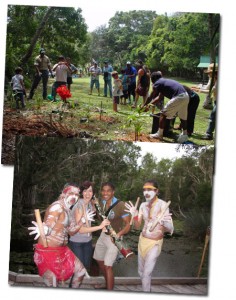 For the wider community it’s about:
For the wider community it’s about:
A totem is an animal, plant, another natural object like rock, river or tree that is connected to a person ancestrally. It can have an emblem such a wooden pole or decorated object to represent it. Much of our art is connected to and reflects the power of totems and how they are connected together in the story of life.
 A totem connects us to Country, to each other and the Dreaming. In nature all creatures and objects have their place and importance, and so do we in our community and in our relationship to Country. By being connected to totems and what they represent we individually and collectively share responsibility for each other and Country. In this way we each make sure that we don’t do wrong by Country, that we look after Country, and it will look after us.
A totem connects us to Country, to each other and the Dreaming. In nature all creatures and objects have their place and importance, and so do we in our community and in our relationship to Country. By being connected to totems and what they represent we individually and collectively share responsibility for each other and Country. In this way we each make sure that we don’t do wrong by Country, that we look after Country, and it will look after us.
There are totems that link us together as women and as men, as a clan or land-connected unit, and as a bigger tribe of people living in Country. Wajung, the dolphin, is the totem of the Arakwal women, and Miwing, the sea-eagle is the men’s totem, and our clan totem is Kabul, the carpet snake. We are the carpet snake people.
Each of us is given an individual totem that we need to learn about and understand, and help protect and maintain for the future.In this way we all play our part in respecting and caring for Country.
We have used some of our key totems as messengers on the website to introduce our culture and explore Country. Below is some information about them. An abridged version of this information is used for scroll-overs linked to main page headings of this website.
The programs, tours and learning activities here are for our people and the wider community. They are about experiencing our culture, strengthening awareness and understanding, as well as respecting and looking after Country. They help develop our knowledge-holders and custodians through ancestral stories and sharing of responsibilities to maintain our culture and look after Country.
This is the place where we got all the news about our local crew and local issues. It’s about keeping updated on what’s happening here now. In this section of our youth zone we talk about local Arakwal youth in every day life and in action in the arts, sports, surf and street skating, music, dance and culture,. This is our space to connect and share dreams with our community and beyond.
Lots of effort and creativity have gone into developing this website so far. We would like to acknowledge those who have contributed their time and skills, and provided photos, written and digital material that you can see here. The website was developed by Sustainable Futures Australia (www.sustainablefutures.com.au) for, and in liaison with the Arakwal People of Byron Bay. Seed funding was provided by the Cape Byron Marine Park Authority (NSW Department of Fisheries) through the Aboriginal Parks Partnership Program, with additional funds provided by the Arakwal Aboriginal Corporation.
Hey, check out this video of Sean Kay, one of our older Arakwal brothers shredding some local waves around the Bay – totally cool!
Learn More
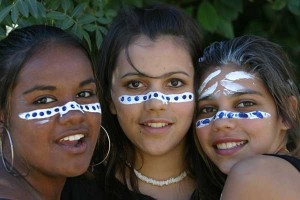 Young, Black & Deadly is a way for Arakwal youth, kids and friends to keep in the loop and into the creative scenes that have people talking. Check out what our mob is doing, connect with us and get inspired!!!
Young, Black & Deadly is a way for Arakwal youth, kids and friends to keep in the loop and into the creative scenes that have people talking. Check out what our mob is doing, connect with us and get inspired!!!
We let you in on what our crew are doing, as well as issues and trends going on here, there and everywhere. There are links to cool local and national acts; surfing, music, dance and sport legends. We’re keeping you connected to culture, coz we’re Arakwal and proud of it!
intro to Joint venture development at Wategos
Intro to Broken Head Caravan Park
A very important and necessary part of the Native Title journey is the growth of the Arakwal People towards economic independence and self sufficiency through sustainable business and economic development.
We are focusing on building a foundation for the future so that Arakwal people continue to create opportunities for the benefit of our mob.
Our ancestors, elders and our people have endured countless hardships and we carry this legacy. Our challenge is to build economic independence and also maintain strong connection to our culural values and country for now and for the future.
Key activities presently being carried out include:
This introduction and posts are presently being completed in this next phase of our Website development – July to September 2012.
Key activities presently being carried out include:
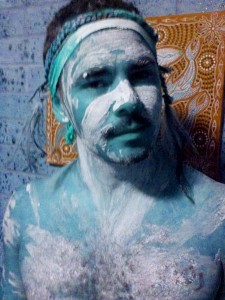 An Arakwal Family Member Nigel Stewart comes from the Minyungbul Coodjingburra (Fingal Heads) and the Yuin People (Narooma, South Coast NSW). Nigel is an artist and dancer, and plays didjeredoo. He has knowledge of bush tucker and is learning to speak Bundjalung language.
An Arakwal Family Member Nigel Stewart comes from the Minyungbul Coodjingburra (Fingal Heads) and the Yuin People (Narooma, South Coast NSW). Nigel is an artist and dancer, and plays didjeredoo. He has knowledge of bush tucker and is learning to speak Bundjalung language.
“I think it is vital in our connection to country and we must learn it and speak it to keep the Bundjalung Language alive and strong to hand down to the next generation. It’s very important to know the language names of country as the names given tell a story.
Nigel has learnt from his elders and friends as well as attending Worawa Aboriginal College in Victoria after leaving high school. He works as a Ranger in Arakwal National Park Byron Bay, putting his knowledge and passion to work caring for Country. Always a coastal person, he enjoys living off oysters, mud crab, pippis, prawns, abalone, lobster, mussels and fish.
“I have been very lucky that the Arakwal Bundjalung elders have passed down their knowledge about the special places and places of plenty. All the bush tucker that I have learnt is from them, so I give my upmost respect to my elders for sharing and passing this culture to the younger generation. All other knowledge is from the ocean, most I have learnt from my father as he is a hunter and gatherer from the Yuin people. My father was taught this by his father and our links are very strong. We have a plentiful, healthy lifestyle growing up near the ocean. My nan and uncles showed me things like how to get pippis in the sand, good places to gather oysters and indicators of fish in the water. It is so important to spend this time with your family and elders to learn.”
 Sean Vidler Kay is an Arakwal Man who comes from Byron Bay, connected to this country through his grandfather and mum who are both Arakwal Bundjalung Traditional Custodians. Sean has grown up around Byron Bay, and knows this place really well – its his homeland. Sean’s passion is to paint Aboriginal designs onto canvas.
Sean Vidler Kay is an Arakwal Man who comes from Byron Bay, connected to this country through his grandfather and mum who are both Arakwal Bundjalung Traditional Custodians. Sean has grown up around Byron Bay, and knows this place really well – its his homeland. Sean’s passion is to paint Aboriginal designs onto canvas.
“I have designed carvings on wood, surfboards and pretty much anything that people request. I also love to do wood burning and paint boomerangs. The boomerang is very symbolic to our people as we were taken away from our country, but just like that boomerang, we always come back.”
The paintings he creates come from the spirit of his country and ancestors. His designs include carpet snake, goanna, dolphin, whale, echidna, pippis, campsites, spirits and trees, all on a beautiful backdrop of landscaped country. The main colours he uses include earth ochre – reds, yellow, white and ocean aqua.
““Painting helps me relax, focus and remember. My paintings come from my feelings which is derived from my family life and history, totems, heritage and culture. When I paint I think of all my Arakwal Family and how we would hunt and gather and live on our land many, many years ago. I have a very close spiritual connection to my grandfather whom walked this land in search of bush tucker and materials to make his artefacts and crafts. I feel his presence still with me today and I represent this in my art.”
Sean is keen surfer who won the Indigenous competition at Fingal Heads in recent years. Check out this video of Sean here surfing in the Bay.
“I love being in the ocean swimming just like a dolphin – this keeps me connected also.”
He has a strong connection to Arakwal country, its stories and history, and fond memories of being with family here. This influences his approach to life and his art.
“The Eagle is the male totem and when I see the eagle flying over, I feel like it is my Grandfather watching over me. The dolphin is the woman’s totum and I feel the same feeling, when I see them – its like all of my family that have past are watching over me. I represent this in my art also. Me and my family would gather pippis at Tallow Creek and Belongil, we would light a fire and cook them up for a feed, we always had fish, mudcrabs and bushtucker, this place is plentiful. I thank all my elders for passing this beautiful connection onto me”.
 Learning Materials that may be available for this program will come from NPWS. Click Learn More below to find out more about this program in general.
Learning Materials that may be available for this program will come from NPWS. Click Learn More below to find out more about this program in general.
For information and bookings for the program please call NPWS on 02 66209300. In the future there will be a link Click here which will go to the NPWS website.
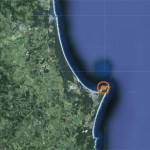 Currenba is located at The Pass a sheltered beach popular for picnicking, surfing and boating access to the Bay and beyond. It means ‘gully’ and refers to the natural water channels found in this forested area. Currenba is a significant place for us.
Currenba is located at The Pass a sheltered beach popular for picnicking, surfing and boating access to the Bay and beyond. It means ‘gully’ and refers to the natural water channels found in this forested area. Currenba is a significant place for us.
Learn More